mRNA 101 AND THERAPEUTIC POTENTIAL
Introducing “the messenger”
The human body can produce thousands of proteins with diverse functions that work together to support life. Instructions for synthesizing these proteins are stored in our genes, which are made up of DNA. However, proteins can’t be made directly from DNA. For some time, scientists didn’t know what the intermediate was that carried the instructions from DNA in the nucleus to the cytoplasm of the cell, where proteins are produced. Today we know messenger RNA, also known as mRNA, is the missing link between our genome and proteins.
What is this RNA messenger?
Chemically, mRNA is an ordered chain of nucleoside triphosphate bases. Three differences between DNA and mRNA are:
1. mRNA has ribose as the sugar (rather than deoxyribose)
2. mRNA is single-stranded
3. The corresponding DNA thymidine bases are replaced with uracils
All mRNAs have different elements in their structure. At their 5’ end is a cap,
followed by a 5’ untranslated region before the coding for proteins begins, and at its 3’ end is the polyadenylated tail, or poly(A) tail.
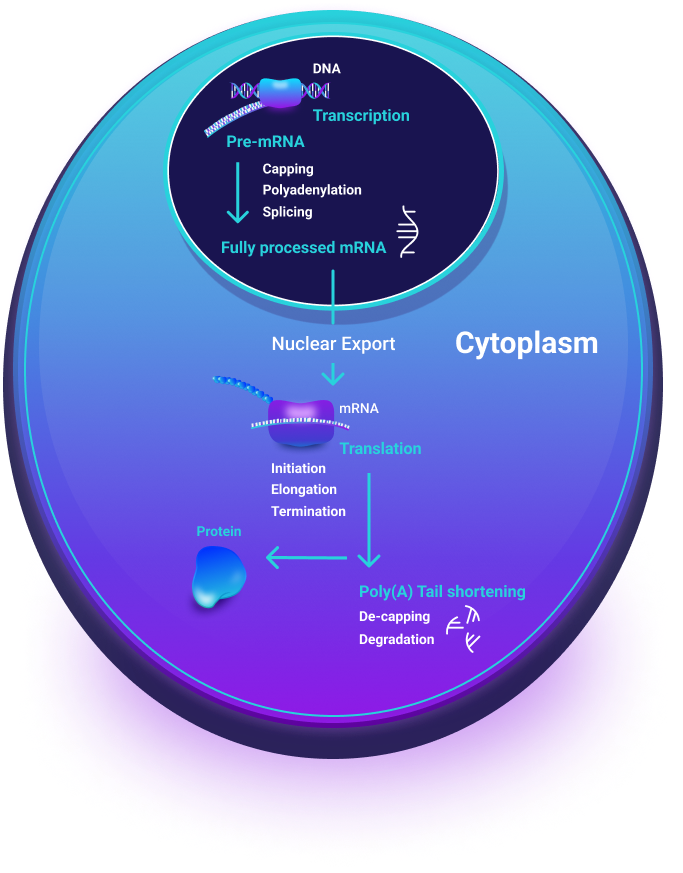

The Life of an mRNA
mRNAs are busy. mRNA is made during the process of transcription. In transcription, a DNA template in the nucleus is “read” by an RNA polymerase to produce an initial mRNA strand. This mRNA form is called a pre-mRNA because it must undergo multiple modifications or “processing” steps to be a mature mRNA ready to encode a protein. mRNA processing includes adding the 5’ cap, the 3’ poly(A) tail, and splicing to remove non-coding intron regions. Once fully processed, a “mature mRNA” heads out to the cytoplasm, ready to help make proteins.
Translation is the process of “reading” the mRNA sequence to produce a protein. Mature mRNA engages with ribosomes in the cytoplasm to complete translation. During translation, the ribosome links amino acids in the order specified by the mRNA to form the encoded protein. Ribosomes read mRNA in three base units at a time, called codons, which correspond to specific amino acids. Amino acids are the base unit of a protein, and a protein is formed when a series of amino acids are linked. This is how mRNA acts as a messenger, connecting genes in our DNA to our proteins.
However, mRNAs are naturally pretty unstable in the cell. This is partly why RNA has a bad rap with scientists, some of
whom don’t like working with it because it’s so unstable. Over time, the poly(A) tail is shortened by exonucleases in the
cell, and eventually, the mRNA is de-capped and degraded. The short half-life of mRNA is one of the challenges to
making it a successful therapeutic tool.


mRNA as a Therapeutic Tool
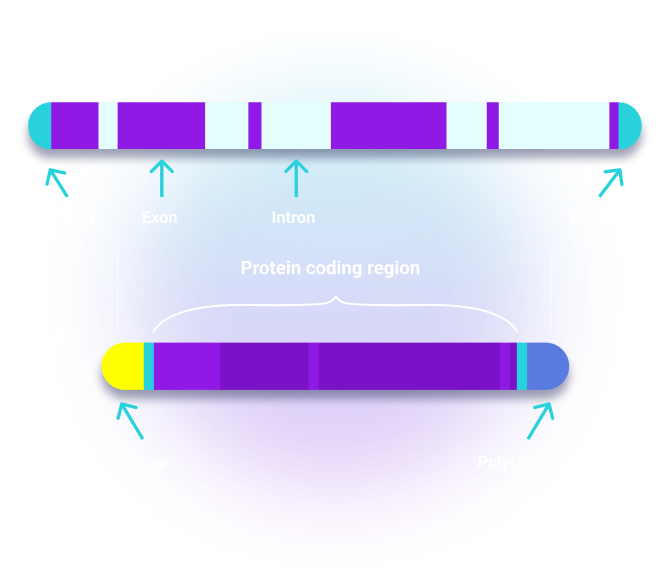
Making mRNA therapeutics a reality
To be successful, mRNA therapeutics must surmount three major challenges:
1. Overactivation of the innate immune system;
2. Instability leading to degradation; and
3. Delivery to the appropriate cellular compartment.
For decades, scientists have investigated applying mRNA as a therapeutic. This includes protein replacement, cell or gene therapies, vaccines, and more. There are many advantages to mRNA-based therapeutics:
- Does not incorporate into the genome to create lifelong changes
- Easily tailored and rapidly made
- Manufacturing is established and scalable
- mRNA therapeutics are flexible in design and function compared with current drugs, resulting in the possibility of treating many unaddressed diseases
In all cases, mRNA therapeutics are based on in vitro synthesized mRNAs which must be appropriately delivered. Synthetic mRNA produced through in vitro transcription is introduced directly into the cytoplasm of cells in our bodies through various methods, depending on the mRNA formulation and desired treatment.
The challenge of immune system activation
To successfully translate synthetic mRNA in vivo, it must evade detection by the innate immune system. The innate immune system identifies common signals of damage or infection, including foreign (pathogenic) nucleic acids. To avoid detection, mRNA can be sequence-optimized, chemically modified, and capped.

A Natural 5’ Cap Structure
mRNAs require a cap structure to successfully persist, reduce innate immune activation, and be expressed in the cell. Mature mRNA produced in higher eukaryotes contains a 5’ cap structure called Cap 1. A Cap 1 is a 7-methylguanosine (m⁷G) connected by triphosphate to the first nucleotide of the mRNA, in addition to a methylated 2’ ribose on the first nucleotide.
Synthetic mRNA is not capped by default, so capping must be built into the manufacturing process. Co-transcriptional capping methods such as TriLink’s CleanCap® mRNA capping reagent have been developed to overcome this obstacle.
During co-transcriptional capping, cap analogs like CleanCap reagents are added to the transcription reaction, incorporating them into the final mRNA. Co-transcriptional capping with CleanCap generates a Cap 1 structure and is the most streamlined and effective manufacturing method for a high yield of non-immunogenic mRNA.

Standard in vitro mRNA Synsthesis
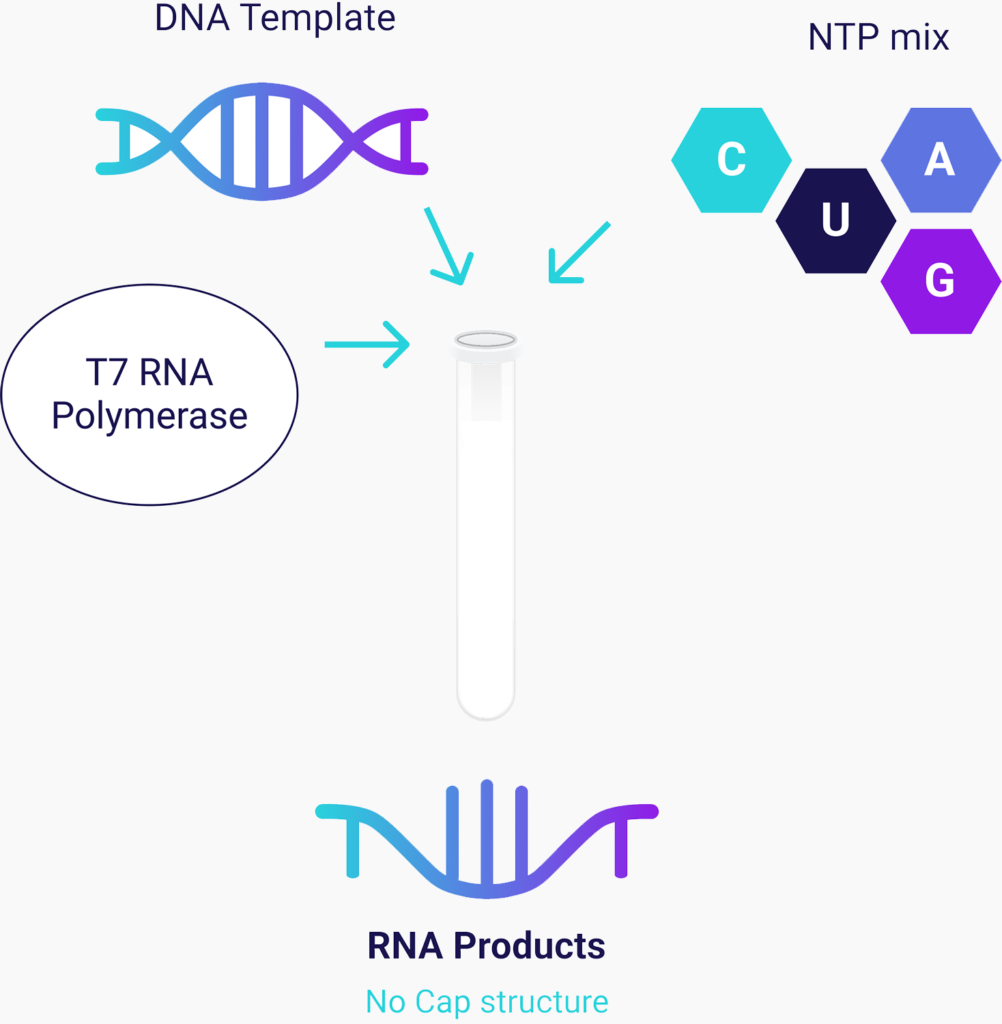
Co-transcriptional in vitro mRNA Synthesis with CleanCap
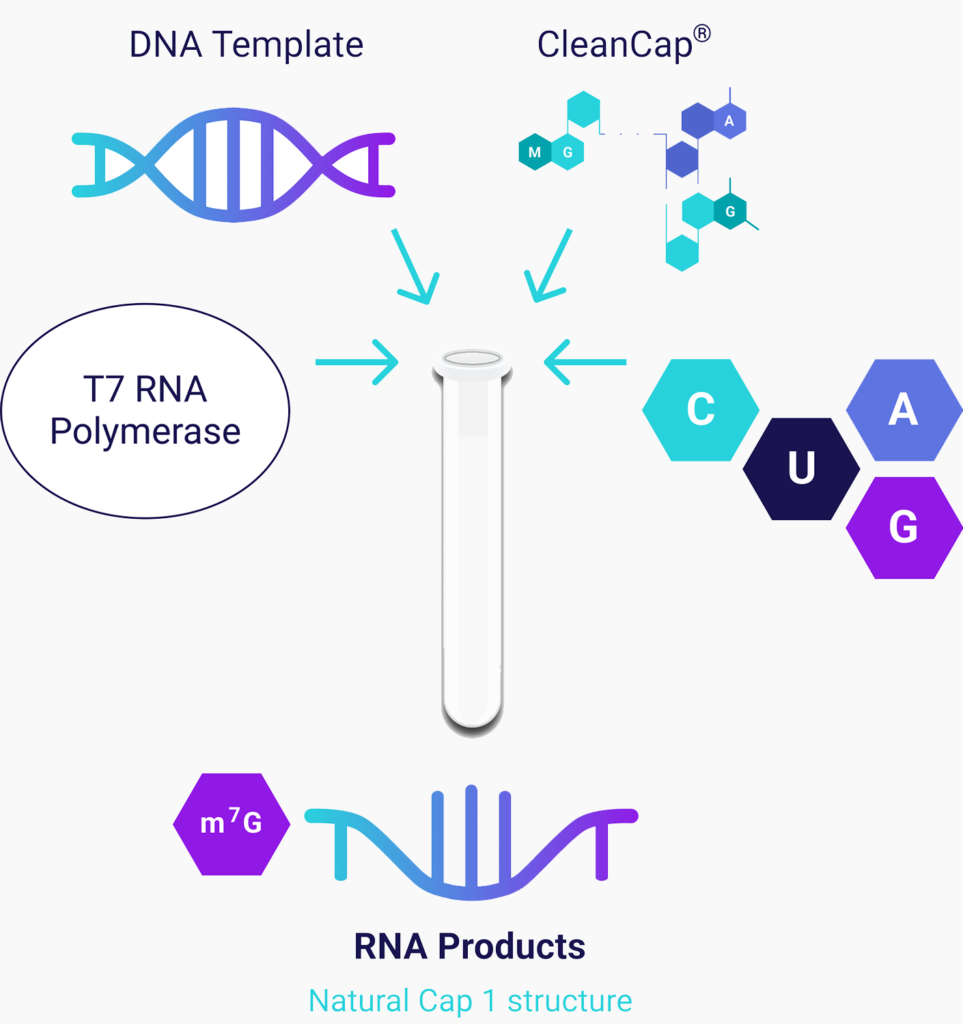


STANDARD IN VITRO mRNA SYNSTHESIS
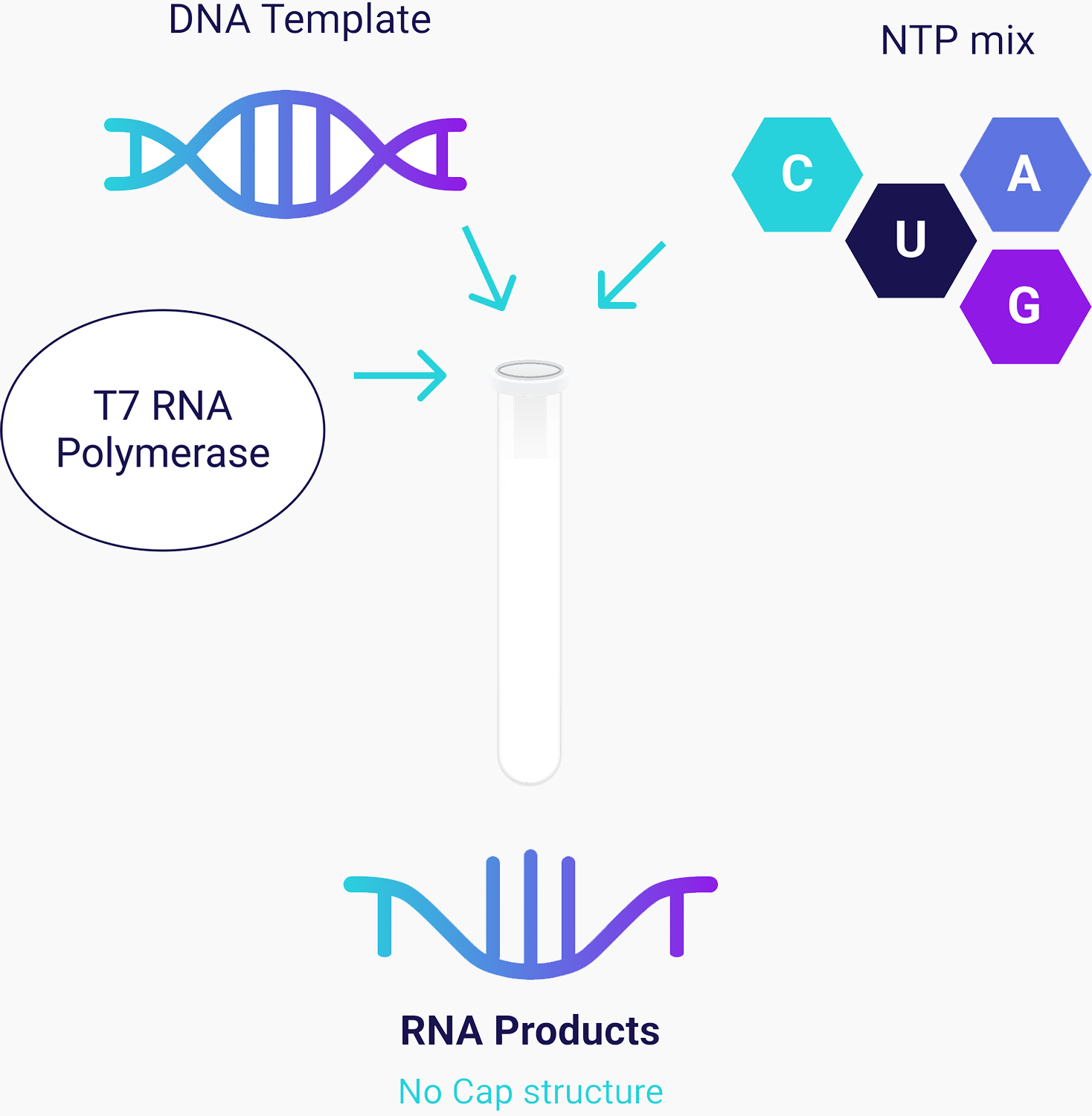
CO-TRANSCRIPTIONAL IN VITRO mRNA SYNTHESIS WITH CLEANCAP
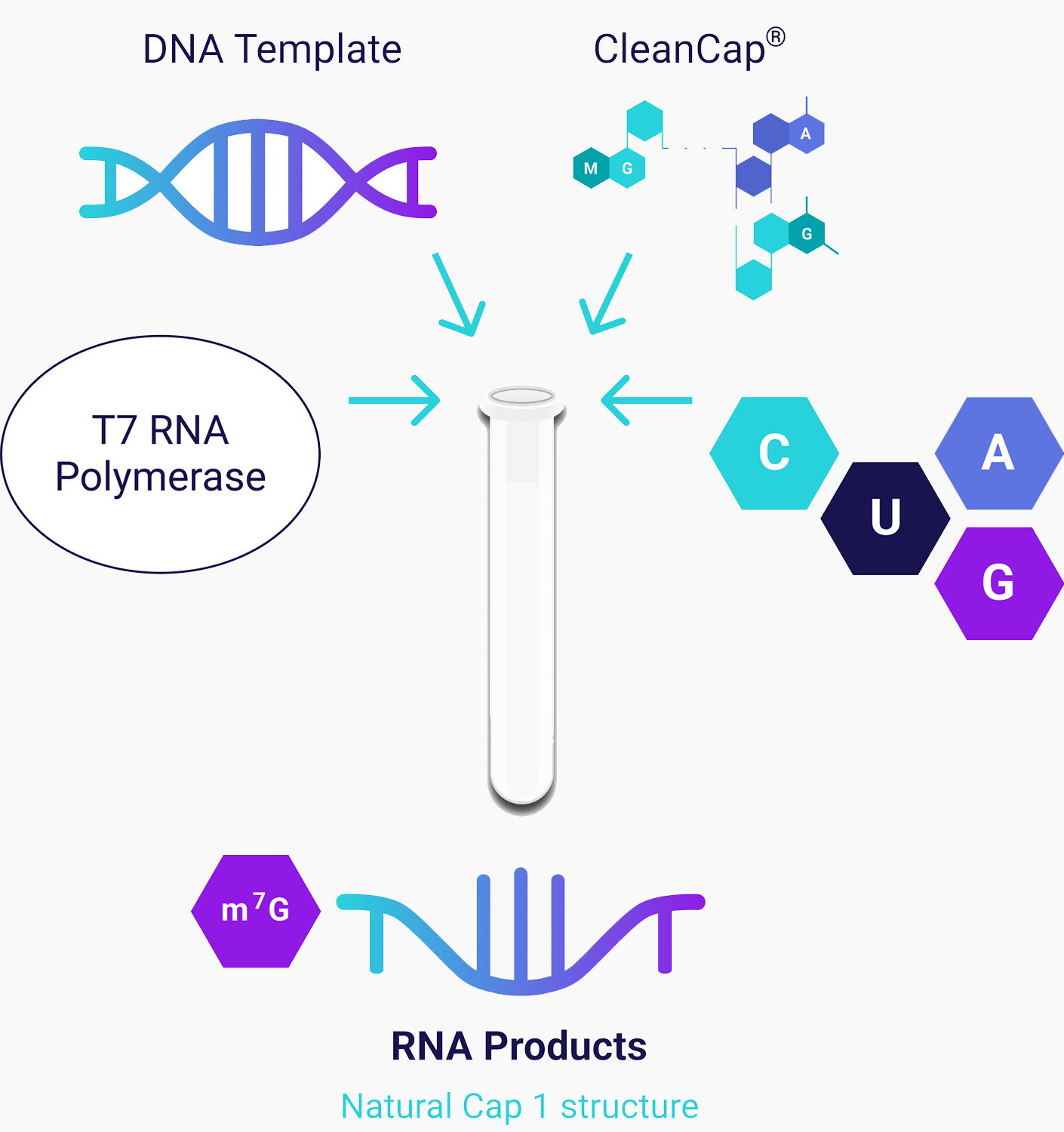


Modifications and Delivery
Modifications are key
Modifications can be used to reduce immunogenicity and improve the stability of mRNA therapeutics. Uridine depletion through sequence optimization and substitution of modified nucleoside triphosphates (e.g., pseudouridine triphosphate, N1-methylpseudouridine triphosphate, 5-methoxyuridine triphosphate) can help evade innate immune detection. Additional 2’ base, backbone, and cap structure modifications can improve the stability and activity of synthesized mRNAs.
Delivery of mRNA therapeutics
mRNA is a large, charged molecule that doesn’t readily cross the plasma membrane. Therefore, delivery of mRNA-based therapeutics largely depends on encapsulating the mRNA in a lipid nanoparticle that gets taken up into the cell of interest via endocytosis. Currently, lipid nanoparticles have been successful in intramuscular vaccine delivery and liver delivery through systemic administration. Broadening the targeting of these delivery systems will greatly impact the usefulness of mRNA therapeutics.
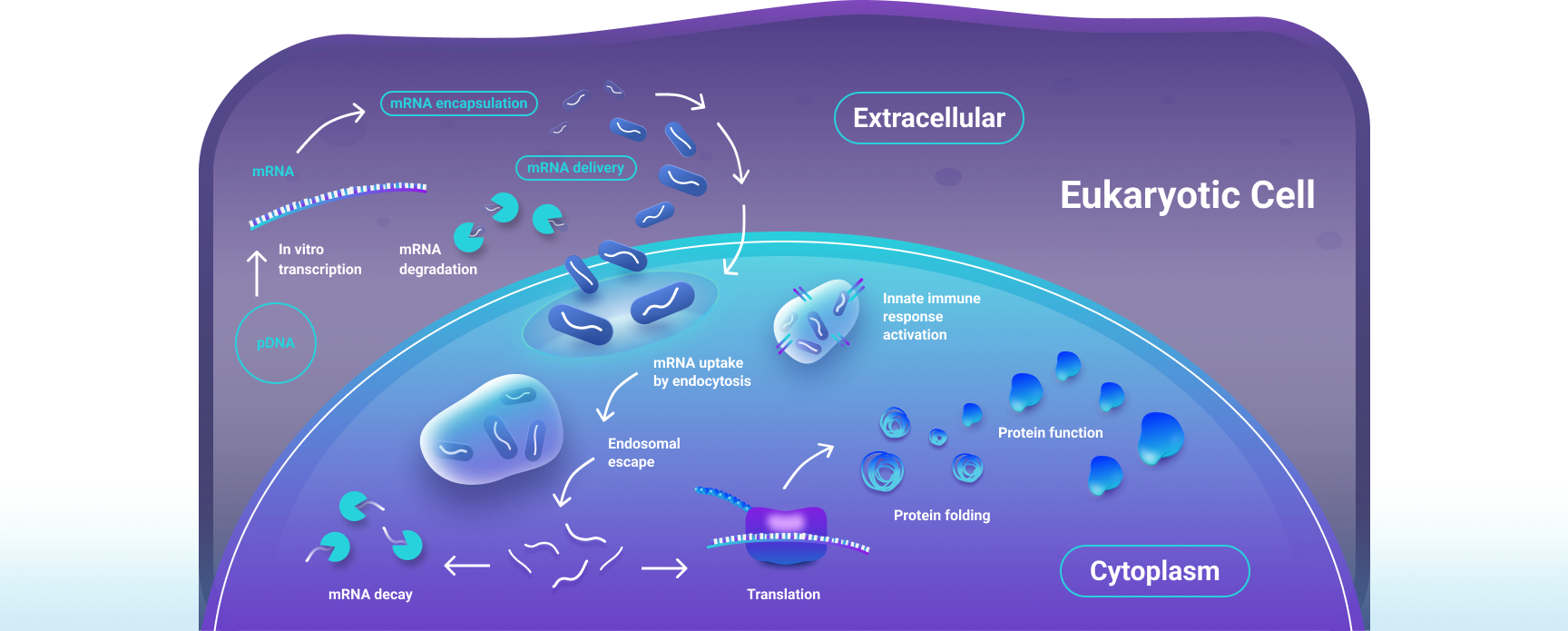

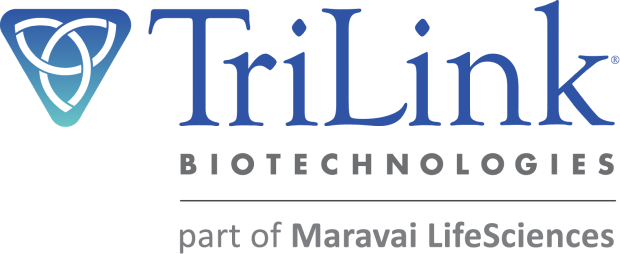

Apr 14, 2021
mRNA Basics Capping Strategies for mRNA Manufacturing